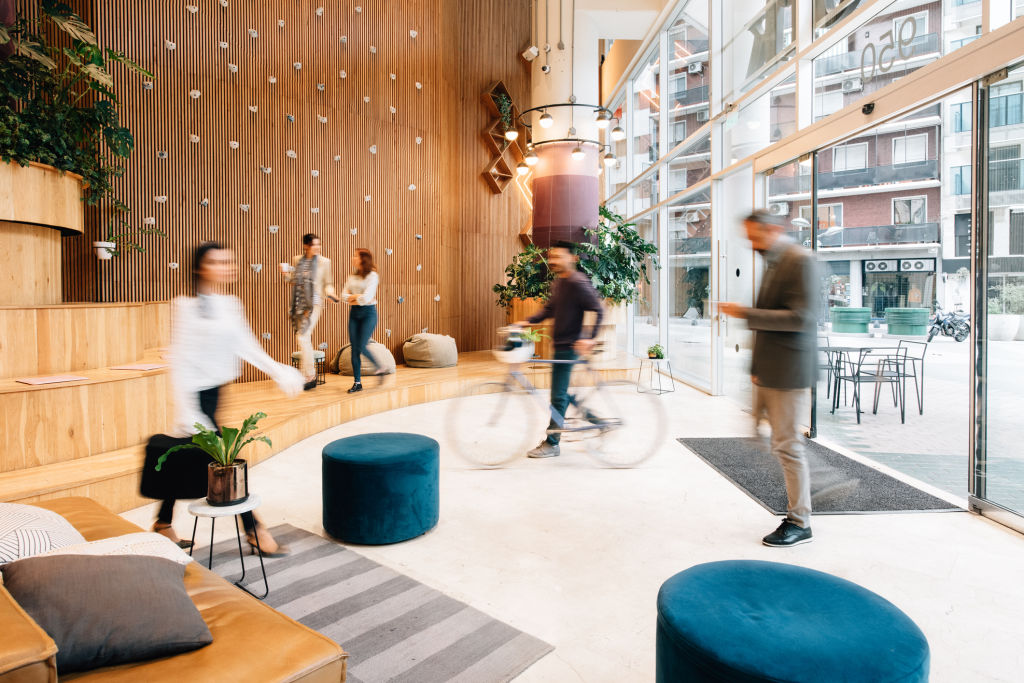While it’s been a tenants’ paradise over the past 18 months, experts suggest a change in our markets has already begun. The Property Council/ANZ Value Sentiment Index tells part of the story.
The March 2022 quarterly result for office property is -2.2, which puts sentiment in negative territory, but the measure has bounced back from a pandemic low of -65.6.
Cameron Williams, director in charge at Colliers, says the lack of confidence is understandable given the complexities driving markets.
“There’s a whole lot of factors at play around confidence. Increased interest rates, increased running costs, supply-line challenges, return to work uncertainty … it’s not surprising to see the index low, but I do think it is turning,” he says.
Angeline Mann, commercial director at Herron Todd White, says the pandemic saw some tenants benefit from the lack of demand.
“If your business was doing well during the pandemic, you were certainly trying to upgrade and take advantage of the high incentives on offer in premium and A-grade space,” she says.
“It’s perhaps a little more competitive now but incentives are still high. Most capital city incentives will be over 30 per cent at the moment, so now is a good opportunity for tenants to secure high-quality space.”
But it’s a tale of two markets with secondary stock struggling to gain a foothold with tenants.
“There’s high vacancy and little to no demand in B-grade stock. In some of these spaces, the effective rental is around half of what it was pre-pandemic. That’s for a strata in a substandard building in an unattractive part of town,” Mann says.
“These sorts of spaces are normally pitched towards smaller professional service businesses – lower-floor offices that could attract medical-type uses, or mum-and-dad type small businesses.”
Mann says the split performance between premium and secondary stock feels entrenched for now.
“While the recovery has been good, there’s still a lot of vacancy in B-grade space and there are still some businesses that are struggling. I think the year will get better and the more recovery there is, the more demand you’ll see in the B-grade market, but it will still take time.
“There hasn’t been a full return to the city but each week it gets better. It’ll be interesting to see how long this takes and where we land on flexible workplace arrangements. It’ll be fascinating to see how businesses handle that and utilise their space.
“I think it’s just a matter of time. There’s a lot of investment in infrastructure across the capitals and things are evolving.”
Paul Lynch, head of northern Sydney for JLL, agrees prime property will lead the charge as leasing markets recover. “The financial metrics work right now for prime property,” he says. “Incentives are at their highest since probably the GFC, so it’s financially viable.”
But he also believes secondary stock will continue to struggle and landlords who don’t act to improve their holdings face real risks.
“There’s two ways it can go. Owners can either refurbish and bring these areas up to a better specification to attract tenants, or it becomes a factor of rental. Do incentives get larger while the rentals don’t move? Perhaps, otherwise they’re at risk of becoming obsolete.”
Lynch says watching the relationship between incentives and vacancy will be key to reading market direction.
“Historically incentives were about double the vacancy rate … Right now, we’re seeing vacancy at around 15 per cent but incentives are much, much higher than 30 per cent.”
